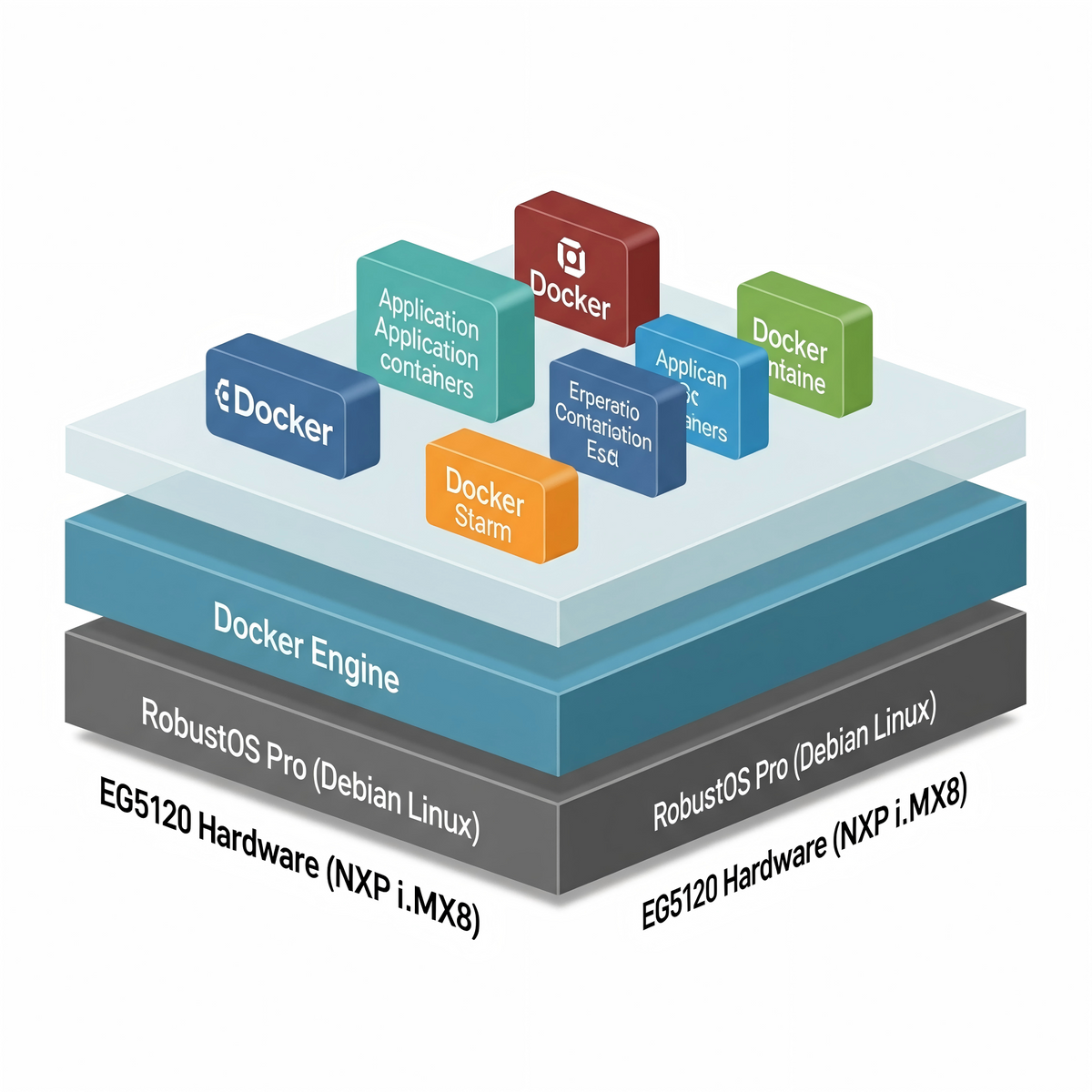
A Beginner's Guide to Docker on IoT Edge Gateways
|
|
Time to read 5 min
|
|
Time to read 5 min
If you're in the world of IoT, you've undoubtedly heard of Docker. But what does it actually mean to run Docker on IoT Edge Gateways, and how do you get started?
This beginner-friendly guide demystifies containerization for the industrial edge. We'll cover what Docker is, why it's a game-changer for IoT, and provide a step-by-step tutorial on how to install and run your first container on a powerful industrial iot edge device like the Robustel EG5120.
By the end, you'll understand how to leverage Docker on IoT Edge Gateways to build more flexible, scalable, and secure applications.
So, you're looking to deploy an application on an Industrial IoT Edge Gateway . You have your code, but now you're facing a common headache: how do you ensure your application runs the same way on the gateway as it did on your development machine? How do you manage all its dependencies without creating conflicts?
For years, engineers have wrestled with this "it works on my machine" problem. This is where Docker comes in. Docker is a platform that packages your application and all its dependencies—libraries, code, and runtime—into a single, portable unit called a container . Think of it as a lightweight, self-contained box that can run anywhere, from your laptop to a powerful industrial gateway like the Robustel EG5120 . This guide will show you just how easy it is to get started with Docker on IoT Edge Gateways .

Before we dive into the "how-to," let's look at the hardware. To properly run Docker on IoT Edge Gateways , you need a device with enough processing power and a modern OS. The Robustel EG5120 is an industrial-grade edge computing gateway built for these kinds of containerized workloads.
Key EG5120 Specifications:
This robust hardware provides a stable and powerful foundation for running your containerized applications reliably in the field.
So, why go to the trouble of containerizing your app? I've seen teams accelerate their deployment schedules by weeks by adopting this approach. Here are the core benefits:
These perks make Docker on IoT Edge Gateways a true game-changer for modern IoT.
Before starting, ensure you have:
Before we start, we need to create sudo privileges directly through the web UI. Follow the steps below:
Navigate to the User Management Section Go to: Sudo user > Sudo User Settings Click on "Add" to create a new user.
Configure User Settings Fill in the required fields. (PS: Enter the old password for the sudo account. This option will be displayed when you need to change the sudo password.)
For Docker on IoT Edge Gateways running a Debian-based OS like RobustOS Pro, the easiest method is to use Docker's official convenience script.
sudouser for command-line access, and then use an SSH tool to log in.
Bash

Bash

sudo. You'll need to log out and log back in for this to take effect.
Bash

Bash

You should see a "Hello from Docker!" message.
Let's try a simple, practical example to see the power of Docker on IoT Edge Gateways . We'll run an Nginx web server.
Bash

Bash

Bash

http://. You should see the Nginx welcome page!
This simple example demonstrates how easily you can deploy complex applications. You can replace Nginx with IoT-specific containers, like an MQTT broker or a Node-RED instance.
Learning to use Docker on IoT Edge Gateways is a powerful skill that transforms how you deploy and manage applications. It moves you from manual, device-by-device setup to an automated, scalable, and reliable workflow. With a powerful device like the Robustel EG5120, which supports Docker on its Debian-based OS, you have a professional platform to build and scale your industrial IoT solutions with confidence.
A1: Containers share the host device's OS kernel, making them much more lightweight and efficient than VMs, which each require a full guest OS instance. This efficiency is critical for Docker on IoT Edge Gateways.
A2: Yes, if a Docker image exists for the ARM architecture (which is very common), you can run it. This containerization makes it possible to run a vast range of applications on the EG5120.
A3: You can pull a new version of the image (docker pull myapp:latest), stop and remove the old container, and then run the new image. For large fleets, platforms like Robustel's RCMS can automate this OTA update process across all your gateways.

